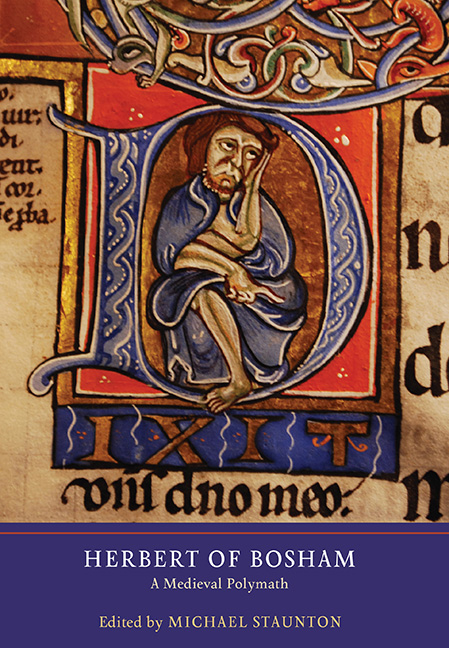Book contents
- Frontmatter
- Contents
- List of Illustrations
- List of Contributors
- Editorial Preface
- List of Abbreviations
- 1 An Introduction to Herbert of Bosham
- 2 Master Herbert: Becket's eruditus, Envoy, Adviser, and Ghost-writer?
- 3 Herbert of Bosham and Peter Lombard
- 4 Pages Covered with as Many Tears as Notes: Herbert of Bosham and the Glossed Manuscripts for Thomas Becket
- 5 Scholarship as a Weapon: Herbert of Bosham's Letter Collection
- 6 Time, Change and History in Herbert of Bosham's Historia
- 7 John Allen Giles and Herbert of Bosham: The Criminous Clerk as Editor
- 8 The Missing Leaves of Arras MS 649: A Tale of Lost and Found
- 9 Encounters with Herbert of Bosham
- Appendix: A New Letter of Herbert of Bosham (1175 x 1178)
- Select Bibliography
- Index
8 - The Missing Leaves of Arras MS 649: A Tale of Lost and Found
Published online by Cambridge University Press: 26 March 2019
- Frontmatter
- Contents
- List of Illustrations
- List of Contributors
- Editorial Preface
- List of Abbreviations
- 1 An Introduction to Herbert of Bosham
- 2 Master Herbert: Becket's eruditus, Envoy, Adviser, and Ghost-writer?
- 3 Herbert of Bosham and Peter Lombard
- 4 Pages Covered with as Many Tears as Notes: Herbert of Bosham and the Glossed Manuscripts for Thomas Becket
- 5 Scholarship as a Weapon: Herbert of Bosham's Letter Collection
- 6 Time, Change and History in Herbert of Bosham's Historia
- 7 John Allen Giles and Herbert of Bosham: The Criminous Clerk as Editor
- 8 The Missing Leaves of Arras MS 649: A Tale of Lost and Found
- 9 Encounters with Herbert of Bosham
- Appendix: A New Letter of Herbert of Bosham (1175 x 1178)
- Select Bibliography
- Index
Summary
ALTHOUGH Arras MS 649 contains the fullest version of Herbert of Bosham's Vita S. Thomae, several abbreviated or otherwise incomplete versions being extant, it was not a particular interest in the archbishop's life and death which sent me to the text. Rather, I was in search of Herbert's own autobiographical interpolations, especially the one where he discusses doubts about the timing of the Incarnation. It was in the course of this enquiry that I became aware of the tangled tale of the missing leaves of Arras 649.
The fact that MS 649 had been mutilated is well known to scholars in the field, but the actual history of the excised leaves and such basic questions as their number and whereabouts at different times are the subject of conflicting accounts. Indeed there is a good deal of what might be thought of as mythology surrounding the story. The aim of this paper is to correct some widespread misapprehensions and to point up some bibliographical lessons along the way.
The preferred edition of Herbert's text of the Vita S. Thomae and its appendage the Liber Melorum is still that of James Craigie Robertson in volume three of Materials for the History of Thomas Becket, Archbishop of Canterbury. His edition supersedes that of John Allen Giles, published in Herberti de Boseham opera quae extant omnia, which text formed part of his ambitious series, the Patres Ecclesiae Anglicanae. It was the Giles edition that J.-P. Migne later appropriated, for the even less reliable version printed in volume 190 of the Patrologia Latina.
However, when I had ordered up Volume III of the Materials from the University of Adelaide Library I was disconcerted to find a line of asterisks at a crucial juncture of the text. They occur at the transition from Herbert's account of Thomas's decidedly brisk manner in getting through the mass to his own doubts about the Incarnation. It was at this point that I consulted Robertson's Introduction to the Materials in Volume I for an explanation of what had happened, and so began my search for the missing leaves of the Arras manuscript.
- Type
- Chapter
- Information
- Herbert of BoshamA Medieval Polymath, pp. 156 - 167Publisher: Boydell & BrewerPrint publication year: 2019



